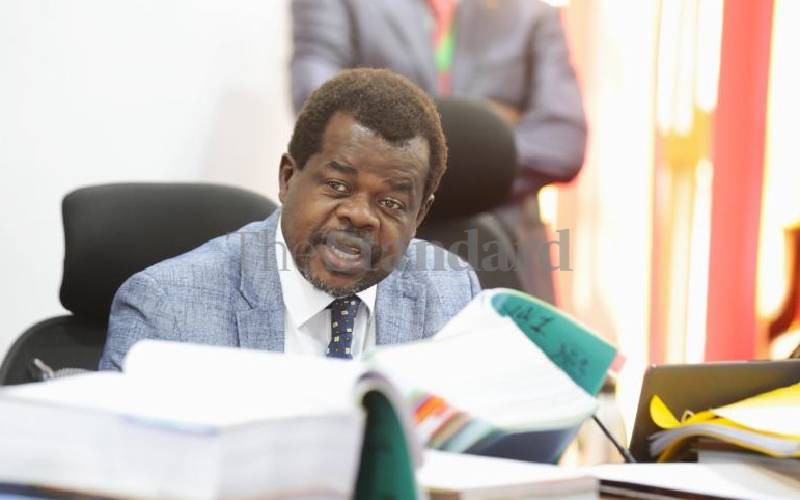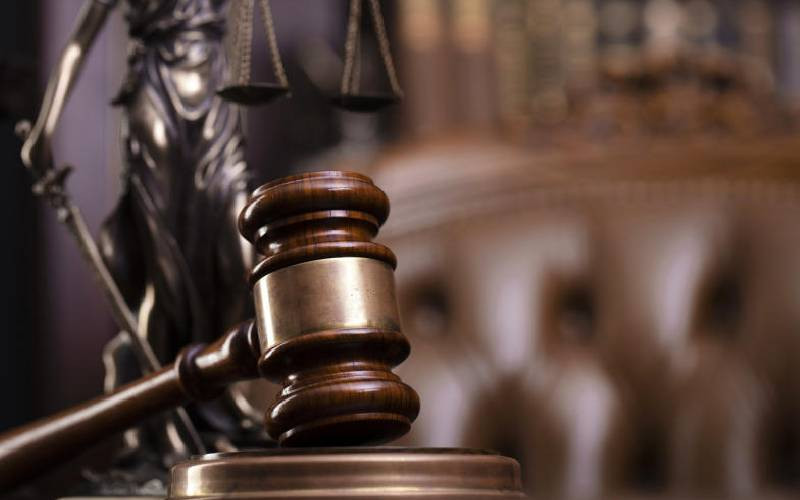The last one week has been dramatic at the Ethics and Anti-Corruption Commission. It started off with the suspension of the deputy CEO by the commission, a suspension that was quickly revoked by the CEO the following day.
Immediately after this, all manner of accusations started flying around, first against the chairman and other commissioners and then against the CEO and his deputy. The Office of the President also weighed in to inform the public that a petition signed by two commissioners against the chairman had been received in September 2014.
The two commissioners however disowned the petition, stating that they were misled. After a week of back and forth, the commission and the CEO announced to the public that they had resolved the sticking issues that had led to the public spat.
They announced, in a show of unity, that they were working together and that the deputy CEO’s suspension had been lifted. On Saturday, information became available to the public the deputy CEO had agreed to go on his annual leave as investigations are carried out. It is now public knowledge that Parliament has received a petition seeking the investigation and possible removal of the chairman and the vice chairperson of the commission. It remains to be seen what Parliament will do with the petition and how fast.
One thing is clear in all this – serious allegations have been levelled against commissioners and senior officers of the commission. These allegations have to be investigated fully and expeditiously if its image is to be redeemed. The happenings in the last one week bring to the fore eerie memories of the disbandment of the Kenya Anti-Corruption Authority (KACA). Then, as now, a powerful figure politically and economically was charged by the authority in a court of law. In what seemed to be well choreographed processes, KACA was quickly disbanded.
The disbandment of KACA was swift and furious. This history informed the otherwise contentious inclusion of the Ethics and Anti-Corruption Commission under Chapter Six of the Constitution of Kenya 2010, to forestall future attempts to disband the Commission should it grow teeth and be seen to endanger the survival of corruption cartels.
Some serious questions come to mind at this point: Are there powerful forces bent on using the current tribulations of the EACC to annihilate the commission? Are senior personalities at the commission beholden to political and corruption cartels? Could the commission, in its recent investigations, have touched a raw nerve of powerful corruption cartels?
We believe the serious allegations levelled against various people at the commission must be thoroughly investigated by an independent entity and anyone found culpable dealt with in accordance with the law. We however would want to caution against the possibility of the allegations being used as an excuse to kill the commission – a classic case of burning the house to kill a rat. Institutions act through individuals. Culpability is personal. Wrongs are committed by individual officers. Those alleged to be gate-keeping for corruption interests should be investigated and punished, while the rest of the commission should continue with its work.
Kenyans must be vigilant and demand accountability of all our institutions, while at the same time being alert to any forces that may want to weaken or kill institutions of accountability. That is why the February 27 judgement by the High Court, in which it finds the mandate of the Commission on Administrative Justice to be only limited to advisory and unenforceable recommendations, is alarming and should be appealed. An independent audit of the work of the EACC should also be mounted. Kenyans need to understand why a Commission that is mandated to fight corruption at quite some dear cost to them would not deliver the much-needed assets recovery and punishment in a country where most public procurements are tainted by corruption.
The fight against corruption cannot succeed if there is runaway impunity for those who steal public funds for their private benefit. We must move beyond generalised condemnations of the institution and put responsibility at the feet of individual officers who for whatever reason fail to deliver on their responsibilities. In other words, accountability at individual, unit or departmental level must build up to accountability at the institutional level. In this way, it would be possible to protect and strengthen public institutions from powerful forces who may want to destroy them for parochial reasons.
 The Standard Group Plc is a
multi-media organization with investments in media platforms spanning newspaper
print operations, television, radio broadcasting, digital and online services. The
Standard Group is recognized as a leading multi-media house in Kenya with a key
influence in matters of national and international interest.
The Standard Group Plc is a
multi-media organization with investments in media platforms spanning newspaper
print operations, television, radio broadcasting, digital and online services. The
Standard Group is recognized as a leading multi-media house in Kenya with a key
influence in matters of national and international interest.
 The Standard Group Plc is a
multi-media organization with investments in media platforms spanning newspaper
print operations, television, radio broadcasting, digital and online services. The
Standard Group is recognized as a leading multi-media house in Kenya with a key
influence in matters of national and international interest.
The Standard Group Plc is a
multi-media organization with investments in media platforms spanning newspaper
print operations, television, radio broadcasting, digital and online services. The
Standard Group is recognized as a leading multi-media house in Kenya with a key
influence in matters of national and international interest.








